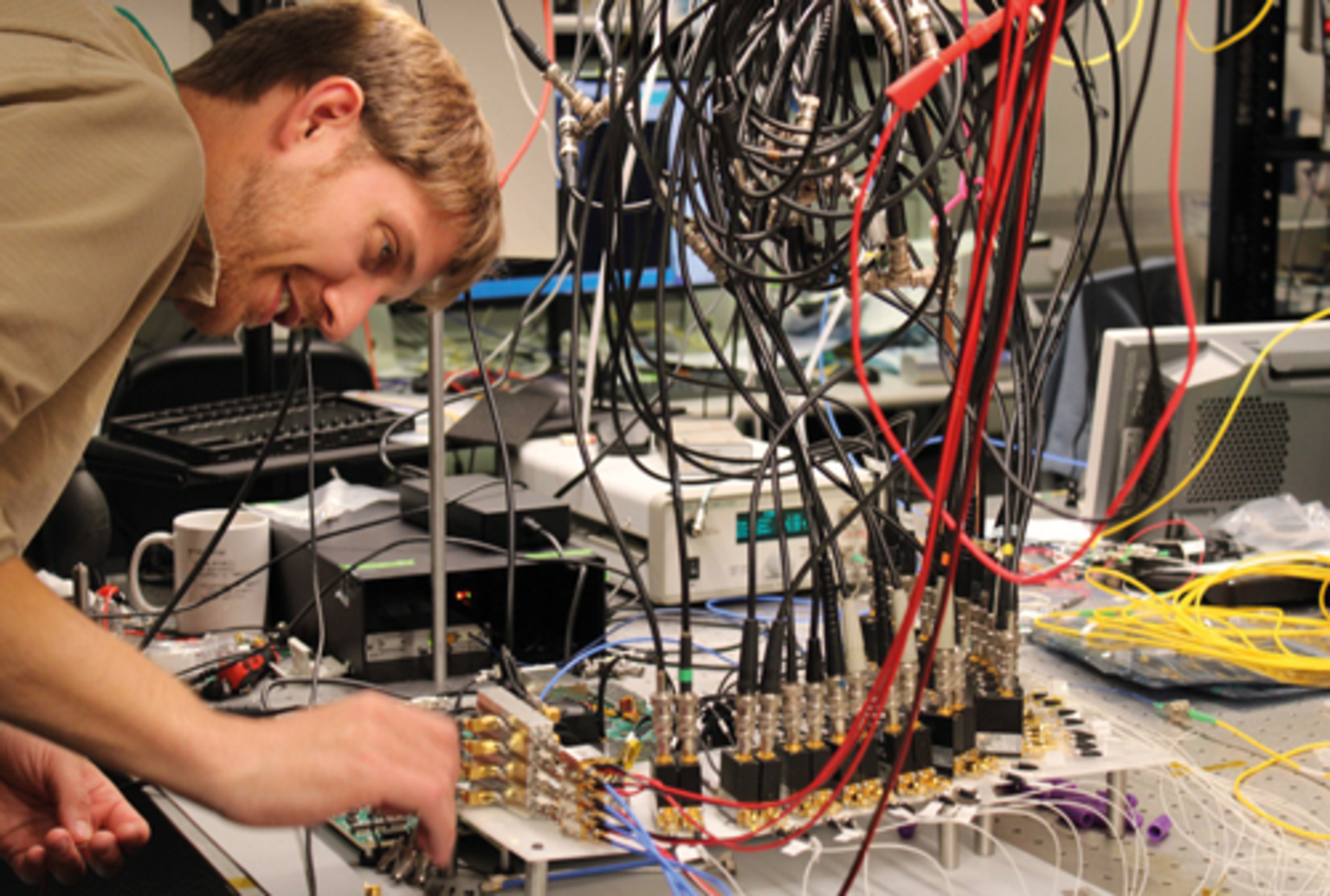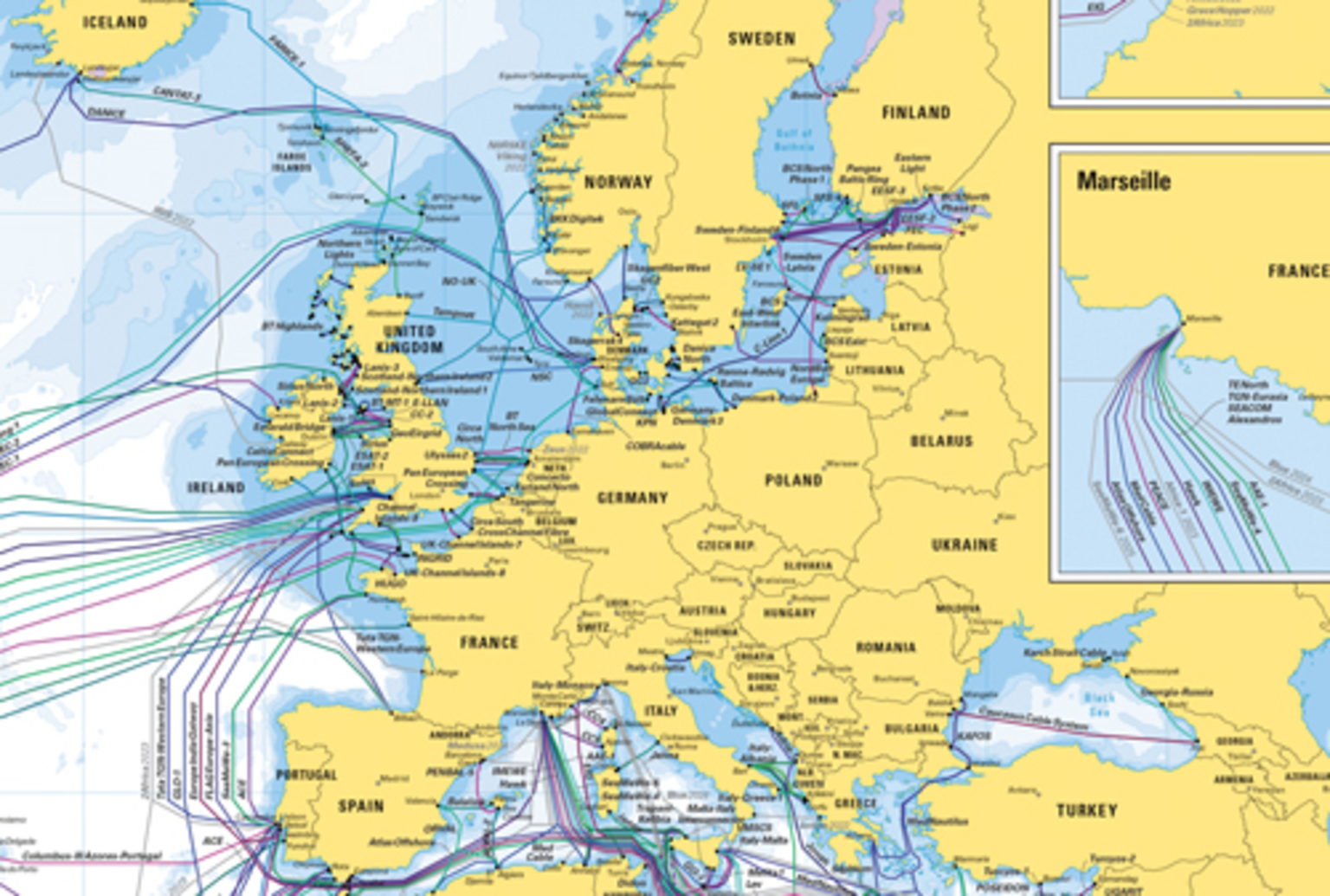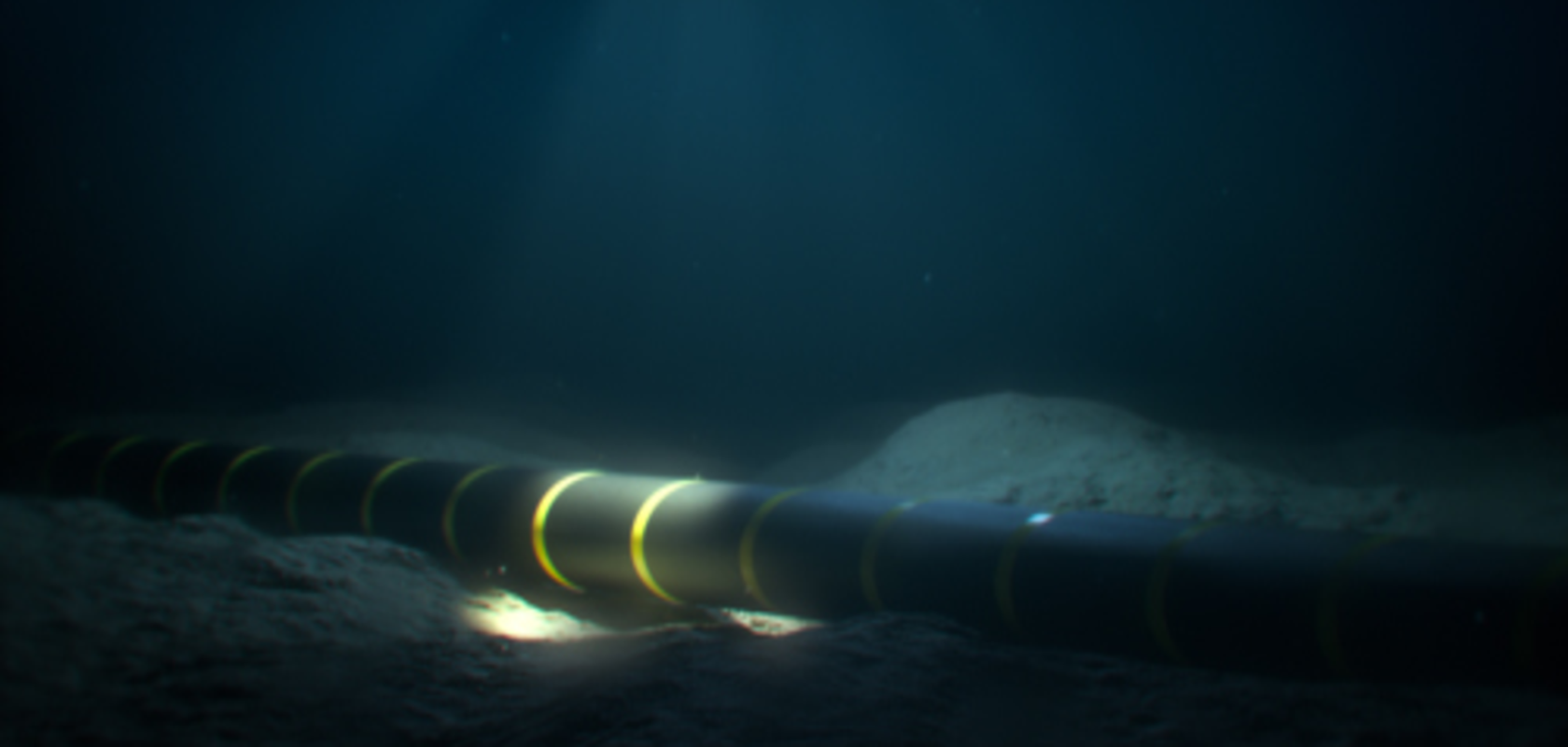Optical fibres are being used to sense environmental events such as temperature, wind speeds or even earthquakes, writes Jessica Rowbury.
Fibre sensors are sensitive to temperature, strain, and mechanical perturbations, enabling techniques such as phase interferometry, polarisation interferometry, and Rayleigh, Brillouin and Raman scattering.
Optical fibres exist high in the sky, deep underground, and on the ocean floor, so offer unique opportunities to measure over vast areas where conventional sensing is often difficult or impossible.
Thanks largely to the telecoms industry, the deployment of optical fibres is widespread, but in recent years, the abilities of fibre-optic cables to sense environmental factors have become more apparent. There is currently little overlap between these networks. Recently, efforts have been made to merge their infrastructure to bring cost and coverage benefits to both sectors.
“In parallel to optical communications there is a whole field of fibre sensing. The reason is very simple – the same fibre we love for telecommunications is actually a great sensor,” said Mikael Mazur at Nokia Bell Labs, during a presentation at the recent OFC in San Diego in March.
Trying to merge telecom and sensing networks carries advantages for both. The telecoms industry could increase the reliability of their networks and prevent future outages. And industries could expand their coverage or enable sensing in areas where it is not yet possible, such as where the cost or deploying cables is prohibitively large.
“I’d like to think that this might be a great opportunity to enable fibre optical communication systems to take a much bigger role in our society than they are today, by not only carrying the data, but also giving us a real-time worldwide roadmap of what goes on,” said Mazur. To accomplish this, Mazur and his team at Nokia Bell Labs are using transceivers within optical communications networks.
“The reason for doing this, and why we find it interesting, is very simple: If we look at the coherent receiver with high-speed digital processing, it’s basically a full-field detector system. So we already have access to a polarisation and phase interferometer… a typical technique used in fibre sensing,” he explained.

Mikael Mazur at Nokia Bell Labs is working on developing coherent transceivers for environmental sensing that can be implemented in existing telecom networks
The team has shown, in a field trial, that a real-time coherent transceiver prototype can be used for continuous sensing over a 524km live network aerial fibre wound around high-voltage power cables suspended from outdoor poles.
The field trial, using an aerial cable between the Swedish cities of Gothenburg and Karlstad, showed that coherent transceivers could potentially be used to perform both environmental and network sensing using existing aerial fibres.
The researchers continuously monitored a 524-km length of aerial fibre in Sweden for 70 hours using time-of-flight measurements. They correlated the sensing measurements with temperatures acquired from stations along the network link. The analysis revealed strong oscillations driven by polarisation changes over 50Hz, likely from the Faraday effect induced by the spun fibre. They demonstrated polarisation sensing of various wind conditions by filtering out the low-frequency portion of these polarisation changes.
'We’re not trying to beat dedicated sensors, we’re trying to create a complementary technique that works well with telecommunications'
The key challenges with using existing infrastructure is that anything integrated onto the sensor line card has to be compatible with ASIC architectures, which is vastly different from the offline Python/Matlab implementation that is possible within the fibre sensing field.
The current transceiver prototype is a scaled down system, says Mazur, which allowed the team to understand the algorithms that can be used to do fibre sensing that are compatible and compatible with ASIC infrastructures. The result is that the current transceiver was not built to be the highest performing or have highest sensitivity. Signal-to-noise ratios are much lower, and the effective number of bits they have access to “would make everyone in the fibre sensing field run far, far away”, said Mazur.
“We’re not trying to beat dedicated sensors, we’re trying to create a complementary technique that works well with telecommunications,” he added.
The FPGA-based coherent system has a digital signalling processing (DSP) clock rate of 125MHz, the same order of magnitude as an ASIC system. It has eight parallel lanes, and it is completely pilot-based, where all of the DSP blocks are updated every clock cycle.
Previous examples of fibre-sensing using existing networks have focused on subsea cables, which provide more favourable conditions than the aerial site above the tree line used in this field trial. Mazur noted: “It is a very exposed environment, which is why we wanted to look at this link. Subsea systems are great for sensing. It’s a perfect environment because it’s so stable. This is probably the polar opposite.”
However, Mazur pointed out that because the frequency ranges for environmental sensing are typically very different to the frequency ranges induced in telecommunication systems, as long as the data can be interpreted appropriately, the use of transceivers for environmental sensing shows much promise.
“We are just scratching the surface of potential applications and will continue to perform field trials over various networks in different environments,” said Mazur. “Our goal is to better understand how this sensor can be used in future smart cities to improve the resilience of both communication systems and infrastructure, while getting a better understanding of the environment around us. We are also actively looking at algorithms for real-time analytics and autonomous decision-making based on transceiver sensing data, enabling early-warning applications.”
Subsea monitoring
In the subsea realm, there has been more development in using telecommunication networks for environmental sensing purposes.
In 2022, a team of scientists at the National Physical Laboratory (NPL) demonstrated a new technique to transform undersea power and telecom cables into arrays of environmental sensors.
Previous work by NPL in 2018 showed that submarine cables could be repurposed as sensors for the detection of underwater earthquakes by using ultra-stable interferometric techniques. However, one cable could act only as a single sensor, and measurements were limited only to the integrated changes over the entire length of the cable. The new research demonstrates how some cables can be converted into an array of sensors rather than just a single sensor.
The NPL-led team, including researchers from the University of Edinburgh, the British Geological Survey, the Istituto Nazionale di Ricerca Metrologica (INRiM), and Google, tested the technique on a 5,860km intercontinental submarine optical fibre link between the UK and Canada. They demonstrated the detection of earthquakes and ocean signals, such as waves and currents, on individual spans between repeaters spread across the entire transatlantic connection.
The optical fibre in each span acted as a sensor, with up to 12 sensors implemented along the cable. Future upgrades will increase this number to 129. Crucially, the data from these sensors can be recorded continuously and in real time. The cable-based array of sensors can identify the epicentral area of earthquakes in the same way as land-based seismometers.

A map of Europe's vast subsea cable network
It is thought that by applying this new method to an existing network of submarine cables, huge and currently unmonitored areas of the ocean could potentially be instrumented with thousands of permanent real-time environmental sensors. It could effectively transform underwater telecoms infrastructure into a giant array of geophysical sensors.
Integrating this approach with current seismometer-based networks could provide the potential to substantially expand the global earthquake monitoring infrastructure from land to the seafloor where only a handful of permanent seismometers are currently installed.
Google has also partnered with the California Institute of Technology (Caltech) to develop a method to use existing subsea cables to detect earthquakes. The team at Caltech devised a way to analyse the light travelling through existing and functioning submarine cables to detect earthquakes and ocean waves without the need for any additional equipment. The researchers focused on the Curie Cable, which stretches more than 10,000km along the eastern edge of the Pacific Ocean from Los Angeles to Valparaiso, Chile. On land, many factors, such as temperature fluctuations and lightning strikes, can change the polarisation of light travelling through cables.
Because the temperature in the ocean remains nearly constant and there are fewer disturbances, the team found that the change in polarisation from one end of the Curie Cable to the other remains quite stable over time. However, during earthquakes and when storms produce large ocean waves, this changes suddenly and dramatically, allowing the researchers to easily identify such events in the data.
Using the new technique, the entire length of a submarine cable acts as a single sensor in a hard-to-monitor location. Polarisation can be measured as often as 20 times per second, so if an earthquake strikes close to a particular area, a warning could be delivered to the potentially affected areas within a matter of seconds.
'We can detect ocean waves, so it is plausible that one day we will be able to detect tsunamis'
During the nine months of testing reported in the study (between December 2019 and September 2020), the researchers detected about 20 moderate-to-large earthquakes along the Curie Cable, including the magnitude-7.7 earthquake that took place off of Jamaica on January 28, 2020. Although no tsunamis were detected during the study, the researchers were able to detect changes in polarisation produced by ocean swells that originated in the Southern Ocean. They believe the changes in polarisation observed during those events were caused by pressure changes along the seafloor as powerful waves travelled past the cable. ‘This means we can detect ocean waves, so it is plausible that one day we will be able to detect tsunami waves,’ explained assistant professor of geophysics, Zhongwen Zhan.
Merging optical fibre networks could not only improve reliability and coverage for the telecoms industry, but help provide a better understanding of phenomena happening across vast areas of the Earth’s surface. In the future, it is likely that the optical telecommunications network will play an even bigger role in our society than it does today.


